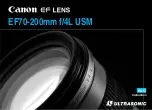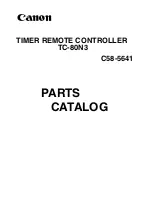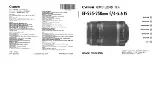
CHAPTER 2
2 - 15
COPYRIGHT
©
2001 CANON INC. CANOSCAN D1230U/D2400U REV.0 MAR. 2001 PRINTED IN JAPAN (IMPRIME AU JAPON)
3. Calibration
Calibration can be performed to normalize the pixels of a linear CCD so that each pixel
produces the same digital output code from the scanner when presented with the same image
light intensity. This intensity ranges from black (no light) to white (maximum light intensity).
The CCD’s analog output may have large pixel-to-pixel variations in their output voltage when
scanning the same white image (corresponding to errors on brighter signals). If these offsets
are subtracted from each pixel, and each pixel is given the optimum gain setting to correct for
different efficiencies, then these errors can be eliminated.
Ideally the digital output code for any pixel would be zero for a black image, and some code
near the full scale for an image with maximum brightness. This code is called the target code.
The analog IC eliminates these global and pixel-to-pixel offset and gain errors with its
Correlated Double Sampling, Offset D/A converter, Variable Gain Amplifier (VGA), and
Programmable Gain Amplifier (PGA).
Calibrating an analog IC-based system requires three steps:
1) Offset Calibration
Takes a black image and normalizes the digital output code for each pixel at or near 0.
2) Boot-Gain/Coarse-Gain Stage Calibration
Finds the optimum gain setting that places the output voltage from all pixels from x0.93 to x9
adjustment range of these two stages.
3) Shading Correction from ASIC
Calculates the gain required for normalizing the output from each pixel to the target code.
4. Filter Processing
When converting resolution and scaling, the image quality tends to be reduced. To prevent
the image quality reduction, filter processing is performed according to the resolution. Filter
processing includes interpolation processing and averaging.
















































